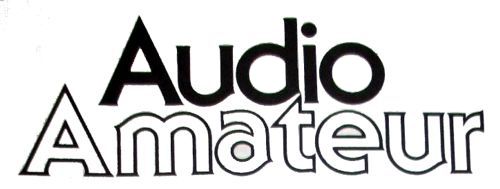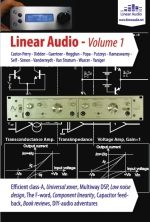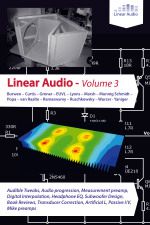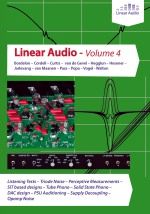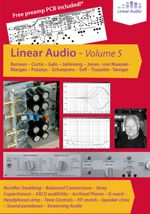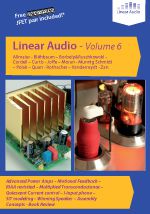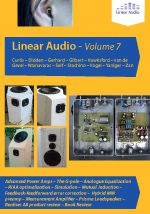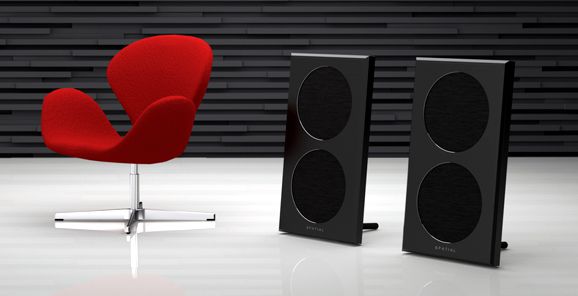| John Broskie's Guide to Tube Circuit Analysis & Design |
|
25 October 2014
Post RMAF Ponderings Post RMAF Ponderings I enjoy digesting. In today's world, however, digesting is something of a luxury, as it requires free time, and time is seldom free. Not too long ago, say a hundred to two hundred years ago, a reporter might travel to a remote country, spend a week or two witnessing a revolution, nearly get shot, get arrested, escape, and return home slowly (or quickly) as a horse or boat or train might take him. During these days (or weeks) of travel, he digested what he had seen and heard. No doubt he began writing at once, but he also revised and rethought his words. The result was that his readers got more than just a quick gloss of the events far off, but the full harvest of his mind's extended efforts to absorb, assimilate, cull, organize, ripen, and select his observations. Today, a TV reporter, having been selected for his boyish good looks and deep voice (or her for her stern voice but shapely legs), is flown off to stand before a video camera, mouthing some obvious inanities about the deaths and suffering, then quickly packing up and flying off to cover a talking beagle in England. Imagine if Alexis de Tocqueville had been flown into Philadelphia, had a few quick drinks, talked to few fellow bar mates, flown back to France, it is unlikely that we would have gotten anything as weighty and as fine as his Democracy in America. Well, what does that matter, if the TV reporter is followed by a printed-page reporter who does spends a week or two witnessing the revolution? Sadly, he isn't likely to go, as the news is now stale; and the talking beagle is now the top news story. So, after over a week of digesting the last RMAF, what did I conclude? Modern, high-end stereo gear is expensive because it has to be. On a purely intellectual level I fully understand that the price of an item is what someone is willing to pay for it, no less, no more. I would never spend $500,000 to buy a modern artist's unmade bed, but if someone is willing to do so, then its price is $500,000; on the other hand, if the most that anyone is willing to pay is $50, then its price is $50. A regular reader, who makes and sell high-end loudspeakers and who was showing at the RMAF (whose speakers I didn't see or hear, unfortunately), wrote me to explain his high prices. In a nutshell, if he sold 300 pairs of his speakers a month, rather than just the three pairs he actually does sell a month, he could easily halve his prices, but not before, as the cost of the parts and labor are only a fraction of the total cost of running a company. Of course, this makes lots of sense. (And even that fraction has become evermore expensive, which I know all too well, as in the brief eight years that I have been selling PCBs and kits, all of my costs have doubled.) Little or nothing in the realm of high-end audio, with the exception of OpAmps and DAC chips, is a mass-consumption item, requiring huge factories and thousands of workers. In truth, the selling high-end audio is closer to the selling of fine jewelry than it is to the selling toasters and car tires. Nonetheless, I bemoan the high prices, as they ensure that Audio will never regain the once dominating position it held. Why not? Simply, there are too many electronic competitors clamoring for our ears' and eyes' attention, competitors that are both vastly cheaper and hugely more socially cool. Think about it: you aren't going to bring your six-foot tall loudspeaker or 100lbs power amplifier into work to show your coworkers in the same casual way that you would bring in your new iPad. Hell, you are not likely to bring in your new $400 audio-grade USB cable to show the guys at work, fearing their supreme indifference and quick ridicule. Try telling your young nephew that—rather than buying that iPad or smart phone or gaming computer—he should really buy an $800 power cord for his stereo. In other words, in the bang-for-buck war, Audio has already lost.
Acceptance of this grim reality, the higher and ever higher prices, however, does not grant us license to price egregiously; any pair of speakers that costs more than a new BMW car must at least offer a gold-clad enclosure or platinum drivers, so when the force-field loudspeaker does appear, as a $100 accessory for your smart phone, your $65k speakers will still be worth something in raw materials.
Audio Amateur RIP By the 1980s, Audio Amateur spawned several new magazines, such as Computer Smyth, Glass-Audio, Performer's Audio, Speaker Builder, Voice Coil, V & T, and World Tube Directory. Perhaps, precisely because Audio Amateur and its progenies did such a good job, the other electronic magazines seemed to cede the audio portion of electronics to it by publishing less and less audio-project articles—or, was it that audio was already beginning to lose its steam. By the 1990s, Audio Amateur had changed its name to Audio Electronics; and with the name change there seemed to be a change in outlook or direction, which was hinted at by the magazine's tag line: "for the amateur & professional audiophile." The first time I read the tag line, I wondered what a professional audiophile was. Are there professional cat lovers or professional sunset lovers? The vibe I got was that Dell had realized that his humble magazine had become something more than just showcase for articles on how to make a nightlight out of a 2A3 or add a mute switch to an old Pioneer receiver; it had become an electronic journal of some stature, offering groundbreaking advancements in the audio-electronic arts and science. Yet, the now bimonthly Audio Electronics kept getting thinner and the paper poorer in quality. I felt that reading the magazine had become more of chore than a joy. The conclusion I quickly came to was that it had been a huge mistake to have spun off the vacuum tube and speaker portions of audio into their magazines, that it would have been much better to print a single monthly magazine, rather than three or four magazines. Yes, even with twelve monthly issues, the single magazine would have been fat, but not nearly as fat as the stack of the other magazines, which would have been an improvement, as the single-to-noise ratio had gotten quite poor. Less is more in this case. Much like the Collected Works of any author is commonly known as the tombstone on his literary efforts, not every article published in the three or four magazines was worth reading. Audio Electronics then became audioXpress, and Glass Audio and Speaker Builder folded. Its new tag line is "Advancing the Evolution of Audio technology." Was the old Audio Amateur resurrected as a result? No, well at least not in my eyes and heart. The recent issue of audioXpress is not the Audio Amateur's son or even grandson, but a distant relative, one who lives in Europe, not the United States. Other than the ads, everything about the new audioXpress feels Euro, which is not a bad thing. Indeed, I love almost all things European. But I am an American who longs for the old American Audio Amateur. Wait a minute, John, many of the articles in the old Audio Amateur were written by Europeans, such as Erno Borbbely, Jan Didden, and Reg Williamson. Well, let me grant that being a Brit, as Reg Williamson was, counts as being European, which is debatable, the essence of the old Audio amateur was American in temperament and outlook: friendly, arrogant, boisterous, individualistic, inventive, optimistic, iconoclast, competitive. Yes, many characteristics are contradictory, and certainly not all Americans are like that, and no American is like that all the time, but the American family resemblance is strong and easily identifiable to non-Americans. If you want to understand what Americanism is all about, think about American music and American cars, think of barbershop, big band, boogaloo, blues, blue-grass, country, hip hop, jazz, rap, R & B, rock 'n roll, soul, swing music, and American hot-rods. Every people make and enjoy music, but Americans had to create these new music genres to match their temperament and outlook. Men modify their cars everywhere, but only Americans built hot-rods. When I get around to it, I will buy the CD-ROM that holds 2013's twelve issues of audioXpress. No doubt, I will enjoy ad learn from it, but I will still mourn the death of Audio Amateur. Not to end on a sour note, a closer relative to Audio Amateur is Linear Audio magazine. Jan Didden has produced the finest audio-electronic magazine ever; period.
Yes, it's more European than American, but many Americans do write for it, such as Bob Cordell, Gary Galo, Nelson Pass, and Stuart Yaniger. Think of it more as a book than a magazine, as it holds no ads. Yes, no ads, which means that its 200 pages effectively equal 400 pages in an ad-filled magazine, as the ratio between ads and content in most magazines is 50:50. In addition, Linear Audio presents the cleanest layout and most readable schematics. Linear Audio is obviously a work of love, which all audio lovers should enjoy and support. Another conclusion I came to is that it is so very easy to be misled at an audio show. How's that? I don't mean being taken in by slick salesmen or rigged presentations. No, I mean just coming to the wrong conclusions on your own. My favorite quote from Richard P. Feynman comes immediately to mind:
Although I don't have this nugget of wisdom printed in 100-point font and glued to the top of my computer monitor, I should. It is so easy to fool yourself. Or, put slightly differently, it's tough to arrive at sound conclusions. My counsel to friends before arriving at an audio show is that they must ignore the negative and appreciate the positive. What does that mean? For example, if you hear a highly regarded loudspeaker sound just dreadful in one room, is it, in fact, dreadful? You cannot logically make that claim, as there are far too many variables, such as faulty amplifiers, poor room acoustics, dirty mains voltage, or something as simple as a bad recording. Remember, you are not hearing just the loudspeakers, but an entire chain of recordings and audio equipment which includes the room and the voltage coming out of the wall socket. I once lived next to a radio station and as a result I couldn't make a noise-free phone call or use my distortion analyzer, the radio waves in the air about me were so strong as to intrude everything electronic. On the other hand, if a loudspeaker sounds fabulous, then it can be fabulous. Note how I didn't say "IS FABULOUS," but "can be fabulous." Possibly, it was being driven by a current-output power amplifier and your conventional voltage-output amplifier is not a good match, or vice a versa. The only conclusion you can draw is that it can be fabulous. A friend once told me to never evaluate a loudspeaker in the maker's room, as the speaker makers always seem to screw up the sound, whereas an amplifier maker who uses the same loudspeaker often gets the best sound from the loudspeaker. Assuming that his rule is correct, what could possibly explain it? How about this: the loudspeaker maker's concern is making a good loudspeaker, which means a flat frequency response, whose attainment required huge effort and much skill; he arrives at the show and brings his arsenal of test equipment and sets about getting the flattest response he can from the microphone he places near the speaker, sidestepping the room reflections, which only muddy the results. In contrast, the amplifier maker already knows that the output from his amplifier is flat, so his only concern is getting the best possible stereo imaging, articulate bass, and powerful dynamics from the entire system, thereby allowing his power amplifier to shine. Which room do you think is likely to have better sound? Note that I didn't ask which room is likely to have a flatter frequency response. In many rooms, the last thing you want is flat frequency response from one meter in front of the speaker, as the room's own frequency response overlay tilts so severely that the reflected sound's frequency response is skewed entirely towards the highs or lows or just altogether lumpy. Well, it's hard to take anyone's advice, even your own. For example, I was told by the loudspeaker maker that his speakers were about as close to perfection as anyone could ever expect, that they were, in fact, the best-sounding loudspeakers at the entire RMAF. Hubris invites nemesis. I was sorely tempted to say, "I doubt that they are the best speakers on this floor, let alone the whole show." I am glad that I didn't, as he—in spite of his overbearing arrogance—might be right. At the time, it was impossible to know one way or the other. For example, even if I walked into the next room and heard twice as good sound from their loudspeakers, would have I thus proved his assertion right or wrong? No, agnosticism must prevail. If you are a woman, feel free to stop here. Here is an odd situation: imagine that you are perusing artistic picture book of black-and-white nudes, printed in the 1940s. As you flip the pages, one model freezes your hand. She is lovely, painfully so. All that you see pleases your eyes and soul. Her hair, her eyes, her skin, her smile, her ease and self confidence—all combine to halt your breathing. Moreover, she proudly displays a perfect bosom, truly perfect, incapable of any improvement, which you marvel at for longer than your wife thinks appropriate. Okay, say instead that you were given a similar book, but one photographed and published this year, with the exact same woman and the exact same perfect attributes. You would, no doubt, give her photo a quick look over, before flipping the page, making the comment, mostly to yourself, "Nice implants." This situation is a sort of variation on Gresham's law, with the fake driving out the real.
Well, at the RMAF, I heard the Spatial dipole loudspeakers and thought that they sounded quite good and told a friend afterwards that I did. He said that they undoubtedly used DSP to make them sound right, as their natural frequency response must be skewed in the extreme Instantly, I discounted them, ignoring them for the rest of the show. Well, after finally getting around to reading their flyer, I see that they, in fact, eschew such electronic fixes. Like the naturally perfect lady in the book of nudes, I had foolishly underestimated the significance and effectiveness of this loudspeaker, having chalked it up to mere electronic trickery. Interesting. By the way, long ago, so long ago that the fear of sexual harassment lawsuits didn't loom big in our consciousness, the Sport Illustrated magazine swimsuit edition cover shot of some semi-clad young woman was causing a huge stir amongst the guys at work. A female coworker was sick of hearing about how great the cover-girl's breasts were and she let out an angry, "Idiots, don't you realize that they are only the result of good plastic surgery? They are not really hers." Whereupon, I replied, "Say that you just met the most wonderful man, a wonderfully rich man, would it make any difference if I told you that he wasn't really rich, as he had not earned his wealth, having only inherited it?" Well, if the resulting sound is wonderful, does it really matter how it was achieved?
Next Time
User Guides for GlassWare Software
For those of you who still have old computers running Windows XP (32-bit) or any other Windows 32-bit OS, I have setup the download availability of my old old standards: Tube CAD, SE Amp CAD, and Audio Gadgets. The downloads are at the GlassWare-Yahoo store and the price is only $9.95 for each program. http://glass-ware.stores.yahoo.net/adsoffromgla.html So many have asked that I had to do it. WARNING: THESE THREE PROGRAMS WILL NOT RUN UNDER VISTA 64-Bit or WINDOWS 7 & 8 or any other 64-bit OS. I do plan on remaking all of these programs into 64-bit versions, but it will be a huge ordeal, as programming requires vast chunks of noise-free time, something very rare with children running about. Ideally, I would love to come out with versions that run on iPads and Android-OS tablets.
//JRB
|
|
I know that some readers wish to avoid Patreon, so here is a PayPal button instead. Thanks. John Broskie
Kit User Guide PDFs
Only $12.95 TCJ My-Stock DB
Version 2 Improvements *User definable Download or CD ROM www.glass-ware.com |
||
| www.tubecad.com Copyright © 1999-2011 GlassWare All Rights Reserved |


